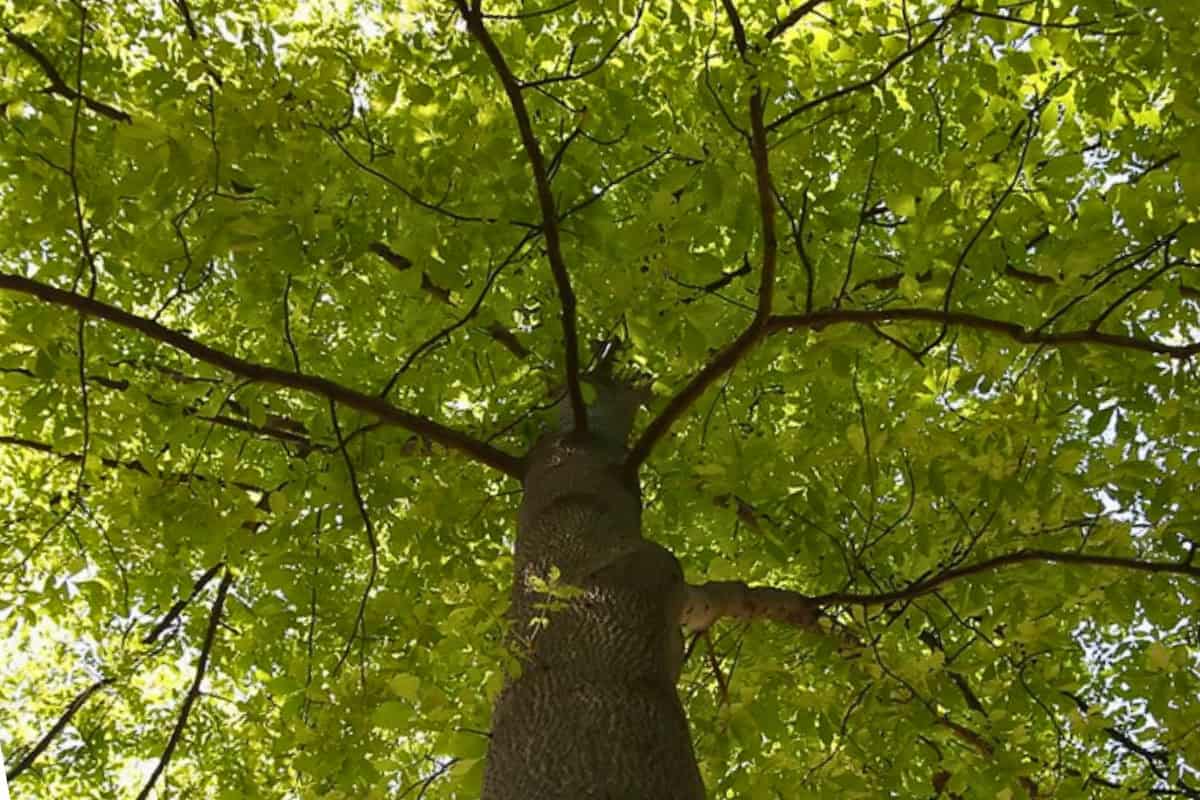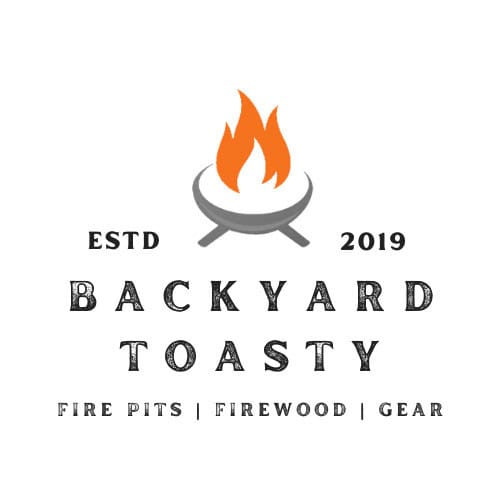
This comprehensive Mockernut Hickory firewood profile explores the southern stalwart of the hickory family, delivering a robust 28,200 BTUs per cord with dependable regional performance.
Mockernut hickory serves as the accessible entry point into premium hickory firewood, offering excellent heat output and classic hickory characteristics at the most budget-friendly price point within the hickory family.
Quick Reference Stats
- Wood Type: Hardwood
- BTU Rating: 28,200 BTUs per cord
- Ease of Splitting: Moderate to Difficult (2/5 scale)
- Seasoning Time: 12-18 months
- Smoke Production: Low to Moderate
- Spark/Pop Factor: Moderate
- Scent Profile: Pleasant – Mild hickory aroma with subtle nutty undertones
Overview & Identification
Mockernut Hickory represents the gateway into premium hickory firewood, especially throughout the southern United States. This solid performer delivers excellent heat output while maintaining the characteristic hickory qualities that fire pit enthusiasts appreciate. For those in its native range seeking quality hickory firewood at a more accessible price point, Mockernut provides proven performance with regional availability advantages.
Common Names: Mockernut Hickory, White-heart Hickory, Big-bud Hickory, Bull Hickory
Scientific Name: Carya tomentosa
Tree Characteristics: Medium to large tree reaching 50-70 feet tall. Features thick, gray bark with shallow furrows. Notable for large buds and thick-shelled nuts that are difficult to crack (hence “mockernut”).
Geographic Distribution
Where You’ll Find It: Native to eastern United States from Massachusetts to northern Florida, west to Kansas and Texas. Most abundant in the southeastern states and lower Midwest.
Availability: Good availability in southern regions – often the most common hickory species in southeastern firewood markets
Growing Conditions: Adaptable to various soil conditions but prefers well-drained upland sites. Thrives in drier conditions than some other hickory species.
Burning Characteristics
Heat Output & Performance
- BTU Content: Strong at 28,200 BTUs – delivers excellent heat output comparable to premium species
- Burn Duration: Burns steadily with good heat retention capabilities
- Coaling Properties: Creates good, lasting coals suitable for extended heating sessions
- Flame Characteristics: Reliable flames with pleasant color and steady burn pattern
Ignition & Fire Management
- Ease of Lighting: Moderate difficulty – typical for dense hardwood species
- Best Fire Stage: Good primary fuel and adequate for cooking applications
- Burn Rate: Steady, predictable consumption provides consistent heat
- Heat Consistency: Reliable heat output with good temperature maintenance
Sensory Experience
Smoke Profile
- Smoke Volume: Low to moderate smoke production – generally clean burning
- Smoke Color: Light to medium gray smoke with reasonable dispersal
- Smoke Flavor: Mild hickory flavor – pleasant but less intense than premium hickories
- Creosote Production: Low to moderate when properly seasoned
Sound & Visual
- Crackling/Popping: Moderate crackling provides nice auditory ambiance
- Sparking Tendency: Moderate sparking – typical hickory behavior
- Flame Appearance: Steady, attractive flames with consistent burn pattern
Aroma
- Burning Scent: Pleasant hickory aroma with subtle nutty undertones
- Pleasant Factor: Generally well-received – familiar, comforting fragrance
- Intensity: Mild to moderate aromatic presence – noticeable but gentle
Processing & Preparation
Splitting Characteristics
- Ease of Splitting: Moderate to difficult – can be challenging due to density and occasional tough grain
- Grain Pattern: Often straight but can have stubborn, interlocked sections
- Tools Needed: Maul and wedges for smaller pieces, hydraulic splitter recommended for efficiency
- Best Splitting Conditions: Easier to split when green – becomes more challenging as it seasons
Seasoning Requirements
- Drying Time: 12-18 months for proper seasoning and optimal burning
- Moisture Content: Target 15-20% moisture content for best performance
- Seasoning Tips: Requires good air circulation – benefits from southern climate advantages
- Storage Considerations: Stores adequately when protected from moisture
Processing Notes
- Chainsaw Considerations: Dense wood requiring sharp chains and proper maintenance
- Bark Characteristics: Thick bark with distinctive furrows aids in identification
- Handling: Heavy wood typical of hickory species – plan for standard hardwood handling
Specialized Uses
Cooking Applications
- Cooking Suitability: Good for cooking applications, though milder than premium hickories
- Flavor Profile: Gentle hickory flavor that adds character without overwhelming food
- Cooking Stage: Suitable for general cooking and light smoking applications
- Food Safety: Safe for all cooking uses – commonly used in southern BBQ
Pest Control
- Insect Repelling: Mild pest-deterrent properties from natural hickory compounds
- Active Compounds: Some natural compounds may help discourage insects
- Application Method: Standard burning provides modest pest control benefits
Pros & Cons
Advantages
- Excellent BTU output delivering strong heat performance
- Most affordable option within the premium hickory family
- Good availability in southeastern United States
- Classic hickory characteristics at accessible pricing
- Suitable for both heating and cooking applications
- Predictable, reliable burning behavior
- Good regional availability in southern markets
Disadvantages
- Lower BTU output compared to other hickory species
- More challenging to split than some hardwoods
- Less distinctive flavor profile than premium hickories
- Limited availability outside southeastern regions
- Requires proper seasoning patience for optimal performance
- Can be tougher to process than expected
Best Practices & Tips
Fire Pit Optimization
- Ideal Fire Size: Works well for medium fires where consistent heat is needed
- Mixing Recommendations: Good base fuel – pairs well with other regional hardwoods
- Safety Considerations: Standard hickory spark management applies
- Weather Suitability: Reliable performance in typical southern climate conditions
Purchasing & Storage
- What to Look For: Dense pieces with good weight and proper seasoning indicators
- Pricing Expectations: Most affordable hickory option – typically 10-20% above standard hardwoods
- Storage Lifespan: Adequate storage characteristics with proper protection
Bottom Line
Mockernut Hickory provides an excellent introduction to premium hickory firewood, offering solid heat output and classic hickory characteristics at the most accessible price point. For southern fire pit enthusiasts seeking quality performance without premium pricing, Mockernut delivers dependable results with regional availability advantages.
Best For: Budget-conscious hickory seekers, southern regional users, entry-level premium firewood experience
Skip If: You want maximum BTU output, premium hickory flavor, or live outside the southeastern range
Mockernut Hickory Quick Reference Table
| Characteristic | Rating/Value | Notes |
|---|---|---|
| BTU per Cord | 28,200 | Strong heat output |
| Density | High | Quality dense hardwood |
| Seasoning Time | 12-18 months | Standard premium timing |
| Splitting Difficulty | Moderate to Difficult (2/5) | Can be challenging |
| Smoke Production | Low to Moderate | Generally clean burning |
| Spark/Pop Factor | Moderate | Typical hickory behavior |
| Ignition Ease | Moderate | Standard hardwood lighting |
| Burn Rate | Steady | Predictable consumption |
| Coaling Ability | Good | Adequate coal formation |
| Scent Quality | Pleasant | Mild hickory with nutty notes |
| Cooking Suitability | Good | Suitable for general cooking |
| Cost Level | Entry Premium | 10-20% above standard hardwoods |
| Best Use | Budget hickory choice | Accessible premium option |
| Overall Rating | ⭐⭐⭐⭐ | Solid entry-level premium choice |
Related Resources: Mockernut Hickory Firewood Profile
Last updated: 8/16/2025


